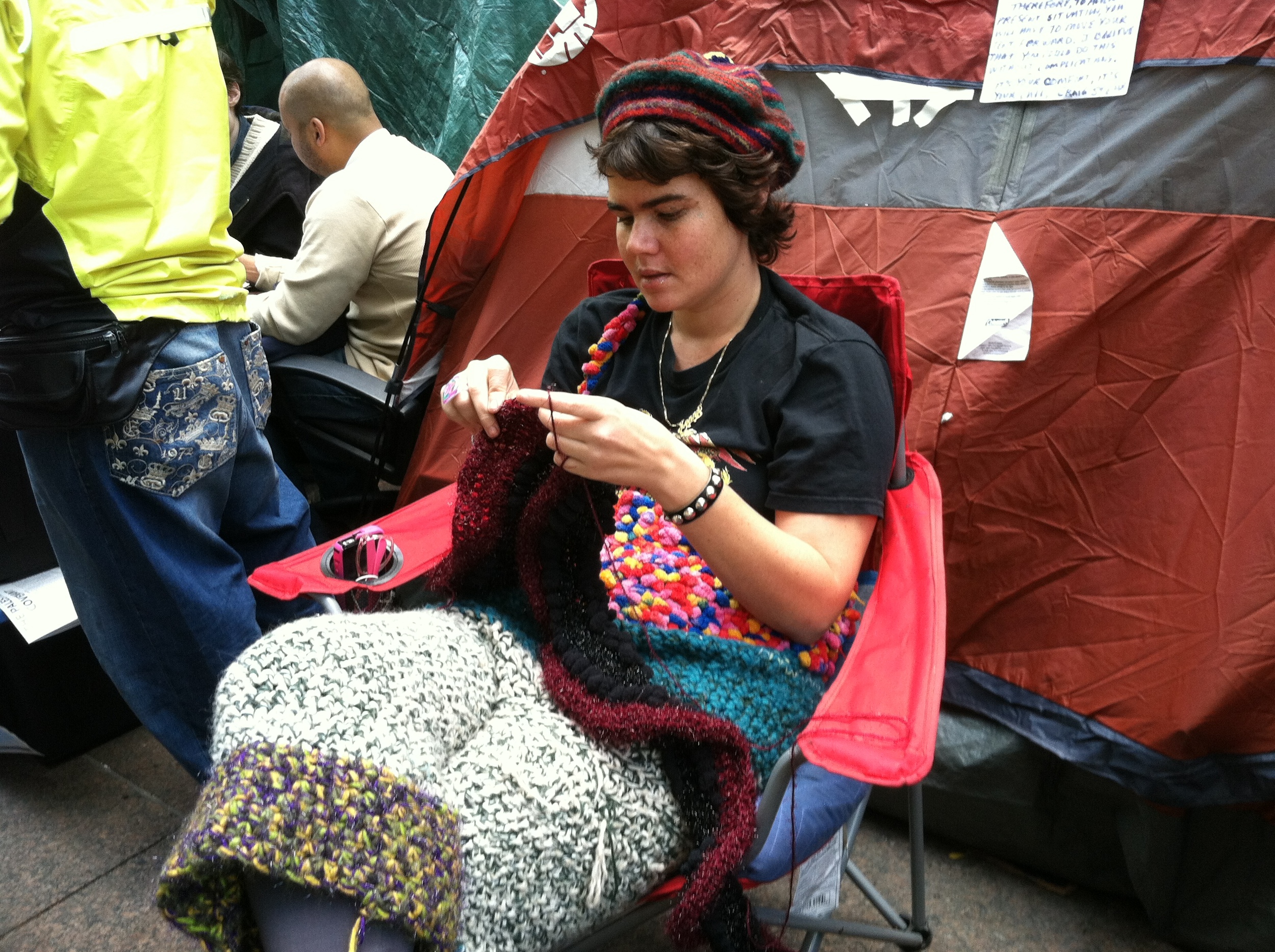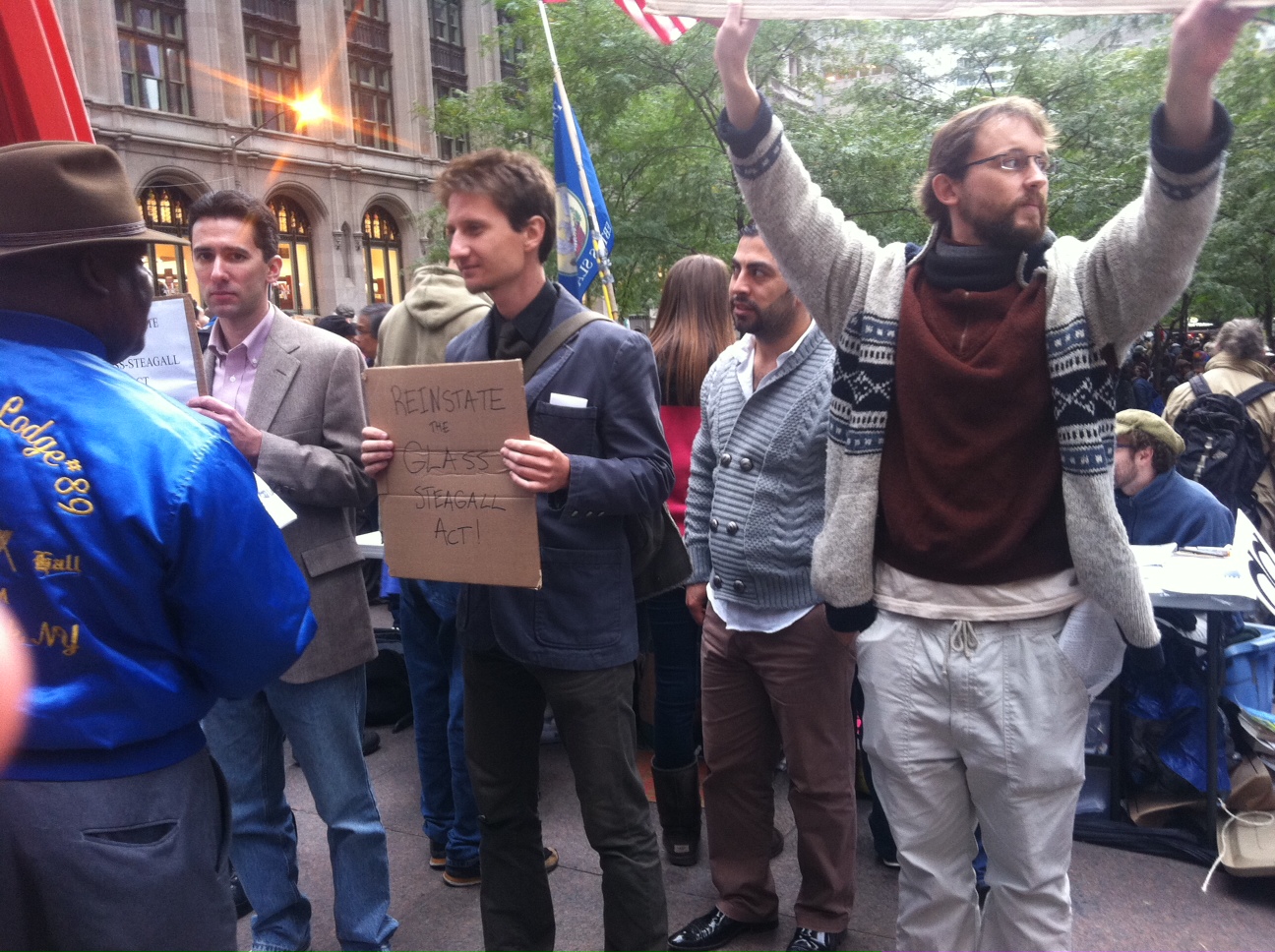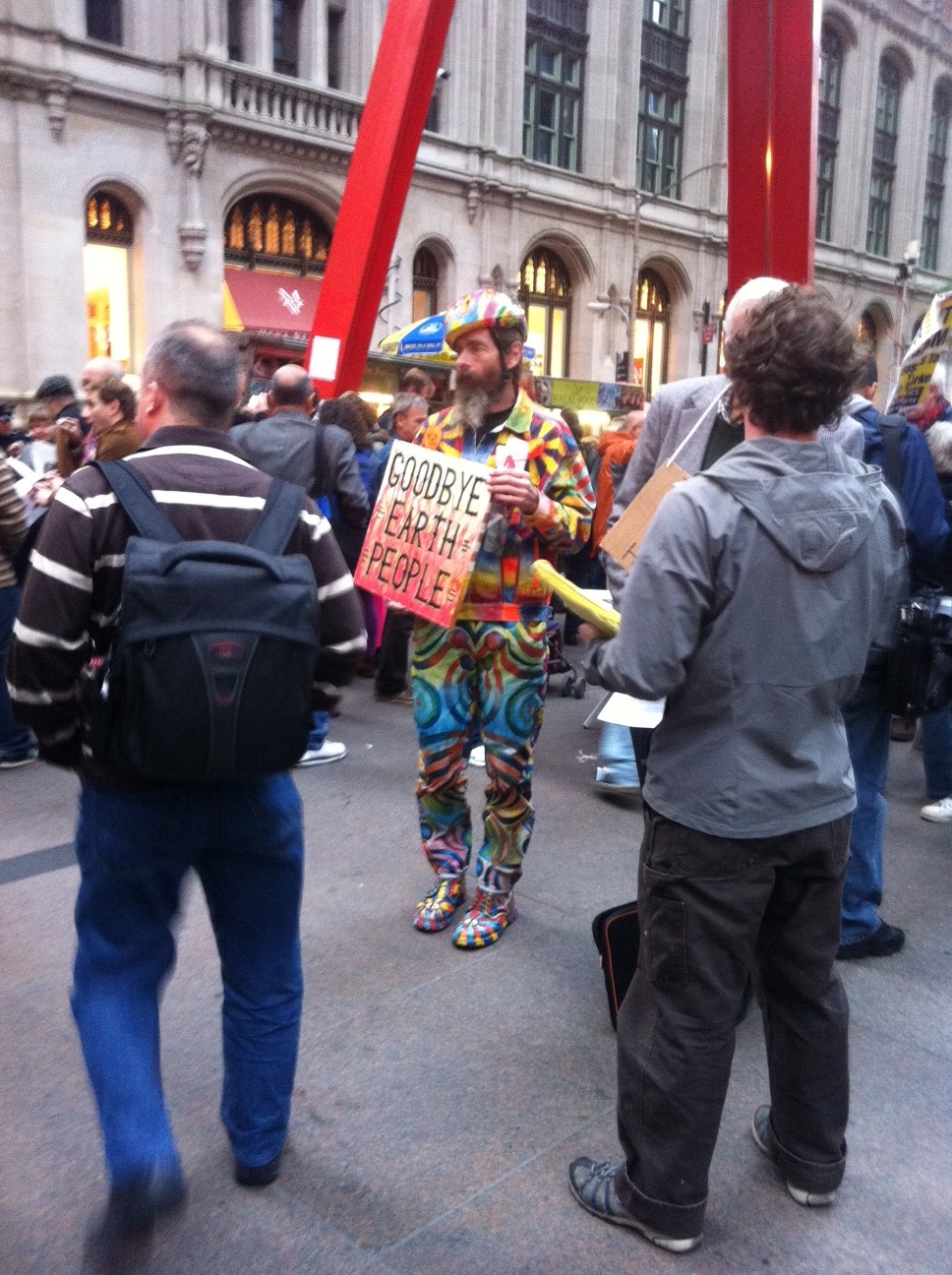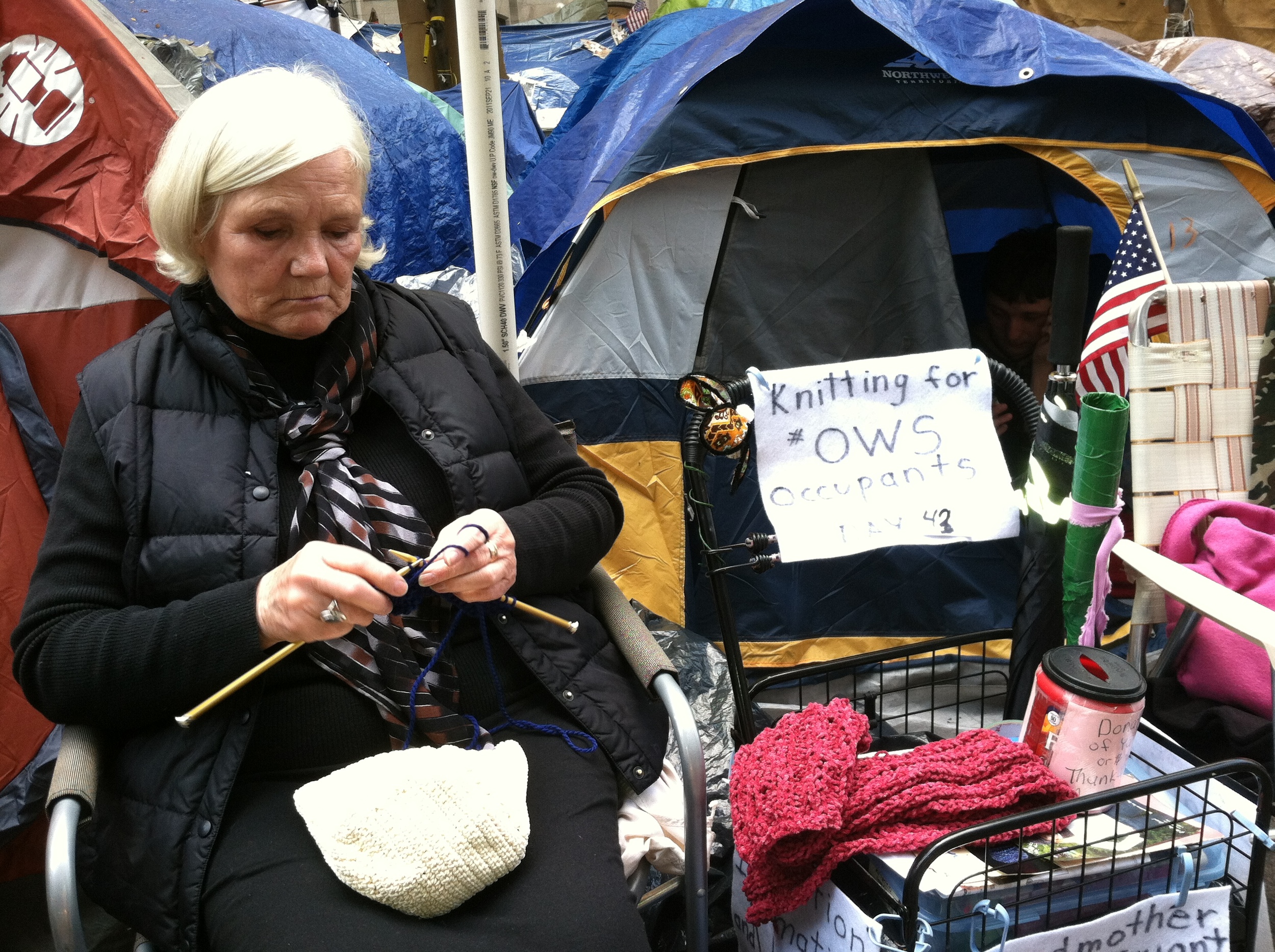Protesting in the Right Clothes
/The second issue of Fashion Projects, which focused on collaborations and collective, was partially dedicated to the topic of clothing and protest—a topic that has currently come to the forefront in conjunction with Occupy Wall Street, as well as in the context of my graduate teaching. Clothing, of course, has traditionally held an important function as a vehicle for protest, something that comes to the fore, most obviously, through the history of European carnivals.
In recent years, perhaps one of the most striking uses of clothes by protest movements was represented by the now defunct "Tute Bianche," which had been formed in Italy in 1994 in response to the Milan mayor’s attempt to shut down the “Leoncavallo,” one of the city’s biggest squatted social centers. Their donning white overalls was, in fact, an ironic take on the mayor’s quote: “From now on, squatters will be nothing more than ghosts wandering about the city.” And it soon came to symbolize the invisibility of those excluded from capitalism.
The anti-globalization movement that began in Seattle and moved to European capitals also brought the by now well-known black bloc, but also the less known Pink movement. “Supporters of self-proclaimed frivolous tactic,” those belonging to the pink movement were armed with fans, sequins, wigs, pink paint and balloons, thus embracing a carnivalesque aesthetic. As a result of their colorful attire, they were often able to bypass security forces, particularly, in 2000, the protest in Prague on occasion of the International Monetary Fund and World Bank meeting, where they made themselves known for the first time. (Lidia Ravviso, “Clashing Hues: European Protest Movements and Costume," Fashion Projects 2).
And of course, clothes took on a central element at Occupy Wall Street both insofar as functionality is concerned—as with the need for certain kinds of weather specific clothes as well as the fact that a system for laundering clothing together with blankets and a free clothes swap developed, at least prior to their recent displacement from Zuccotti Park. The protesters' clothes came to symbolize a range of meanings at time conflicting, and as has been amply documented, there was no aesthetic cohesion among the protesters or uniform of dissent. Rather, the garments worn spanned from business casual to carnivalesque costumes with anarchists’ garbs and weather-resistant clothing in-between.
Interesting discussions arose in the course of my graduate seminar, as we discussed Robert Stam's work on Tropicalia, the carnivalesque and 1960s Brazilian protest movements. The question that came up was what the most effective garb to protest in might be. Since it was in the context of a fashion studies class, the notion of whether clothing was, in fact, relevant to protest was quickly resolved! However, the debate heated up in relation to whether protesters (functionality aside) should be wearing the more “credible” costumes of business casual even suits or outré` carnivalesque costumes. The importance of the suit to OWS was explored in the work of Suits for Wall Street, an artists’ group that, as the name suggests, provided suits to the protesters under the moniker of “ Subversive Business Outfits as Tactical Camouflage.”
Another interesting point brought up was the nostalgic reference to the 1960s, not only in the protesters’ clothing but, in among other things, their facial hair. Although the 1960s protest movement certainly appears more glamorous and humorous, it is hard to access any kind of 1960s untainted from the lens of nostalgia, even (or perhaps more so) in the cases in which student protest movements gave way to violent protest.
Ultimately, paraphrasing Stam, it is important for any protest movement not to throw out the baby of pleasure with the bathwater of imperialism or in this case neoliberal economic policies.
Francesca Granata
Knitters at Zuccotti Park. Photos Courtesy of Mae Colburn

For further readings on clothing and protest, please visit Wornthrough and particularly the piece on the topic by Tove Hermanson.








